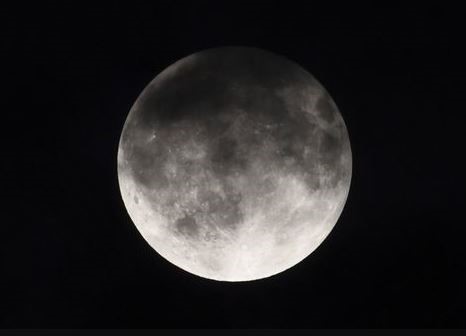- Web Desk
- Today
May’s full flower moon to illuminate the sky tonight
-
- Web Desk
- May 23, 2024

Stargazers are in for a celestial treat this week as May’s full moon, known as the Flower Moon, makes its annual appearance. This lunar event, peaking on Thursday morning, is a notable marker of late spring when many plants begin to bloom.
The Flower Moon will reach its peak illumination at 9:53 AM ET (6:53 PM Thursday, in Pakistan) on Thursday, as reported by NASA.
US repatriates $13 million worth of stolen artifacts to Pakistan
However, according to a CNN report, the best time to view this bright spectacle will be on Wednesday and Thursday nights, since it will be below the horizon during its peak in some areas, according to the Farmer’s Almanac.
The moon will start to rise after sunset on Wednesday, reaching its highest point after midnight, as noted by EarthSky.
In regions such as Washington, DC, the full moon will appear so close to the bright star Antares on Thursday night that the star will seem to disappear behind the moon, according to NASA.
‘FLOWER MOON’ ORIGINS
The term “Flower Moon” is believed to have originated with the Algonquin people of Canada and the northeastern United States, signifying the bloom of spring flowers. Various cultures have also given May’s full moon different names, reflecting the season’s changes.
Half of world’s mangroves under threat, says conservation group
For example, the old English name “Milk Moon” refers to the month of May and the belief that cows could be milked three times a day in late spring. The Cree people refer to it as the “Frog Moon,” highlighting the spring peeper frog’s chirp, and the Dakota and Lakota people call it the “Planting Moon,” marking the season for planting crops.
The Flower Moon also plays a minor role in US history, referenced in Martin Scorsese’s film “Killers of the Flower Moon,” which explores the 1921 murders of Osage people in Oklahoma, coinciding with the Flower Moon of May.
REMAINING FULL MOONS OF 2024:
– June 21: Strawberry Moon
– July 21: Buck Moon
– August 19: Sturgeon Moon
– September 17: Harvest Moon
– October 17: Hunter’s Moon
– November 15: Beaver Moon
– December 15: Cold Moon
Debate erupts over new Kate Middleton royal portrait
Of particular note, the September and October full moons will be supermoons, appearing larger and brighter as they come closer to Earth, according to EarthSky. Supermoons occur when the moon is within 90 per cent of its closest approach to Earth.




